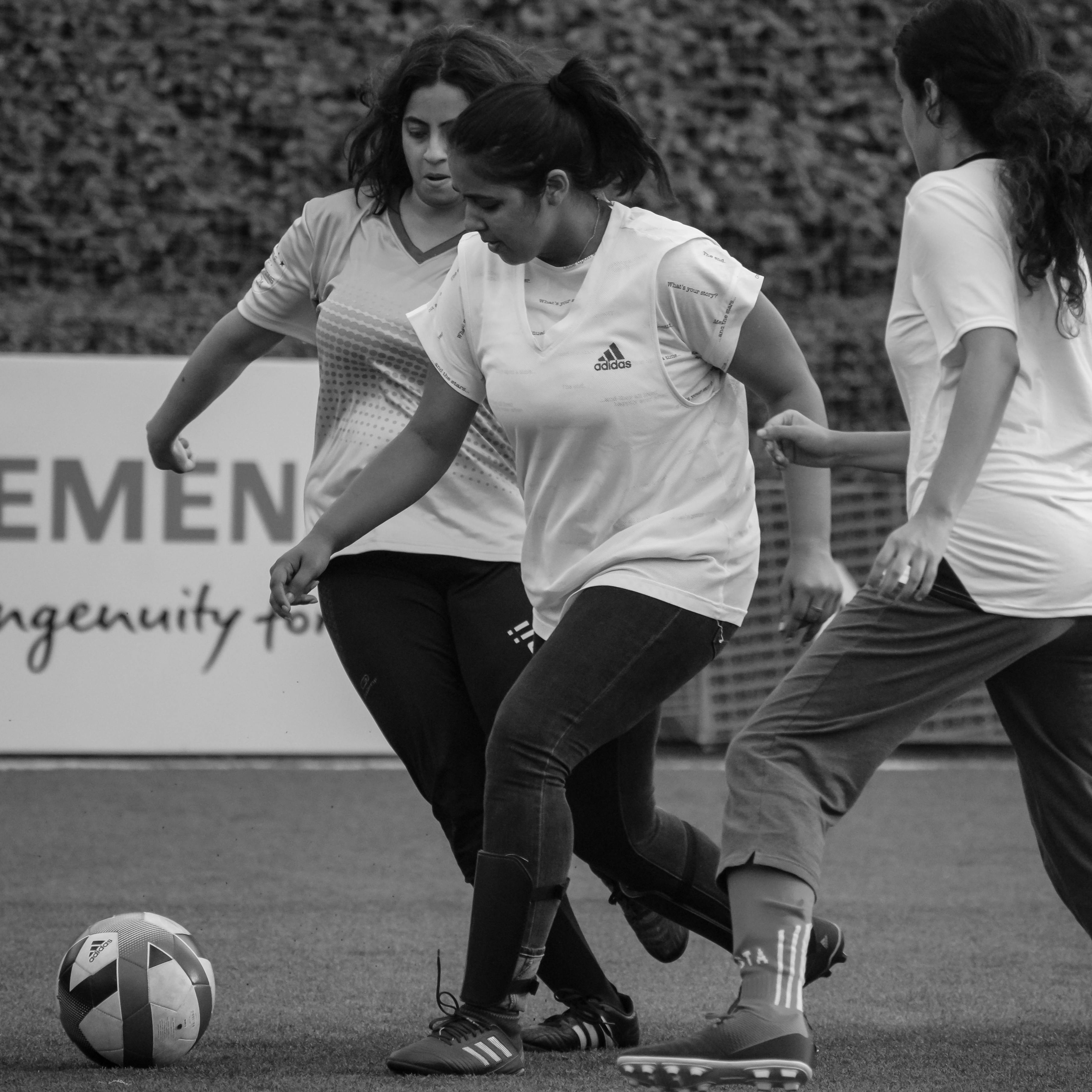Soccer is one of the most popular sports around the world, and its rules and regulations are known to most people. One of the most important aspects of soccer is the length of each half. How long are soccer halves? This article will explain the answer to this question in detail.Soccer halves typically last 45 minutes each, with a 15 minute halftime break in between.
FIFA Laws on Soccer Halves Length
The international governing body for soccer, FIFA, has laws and regulations that dictate the length of the halves in a soccer match. According to FIFA Law 7, each half of a soccer match must last for 45 minutes, with the exception of friendly matches which can be shorter if both teams agree. In addition, there can be up to 15 minutes of halftime between the two halves of a match.
In certain cases, the referee may choose to add on extra time at the end of each half. This is known as ‘stoppage time’ and is usually added on if there have been any stoppages during play such as goals being scored, substitutions being made or injuries occurring. The amount of stoppage time added on is completely at the discretion of the referee and can range from one minute to several minutes depending on how much time was lost during play.
In addition to these laws, it is also important to note that FIFA Law 5 states that any player who receives a red card must leave the field immediately and cannot return for the remainder of that game. This means that if a player receives a red card in either half then the team will be down one player for the rest of that half and extra stoppage time may need to be added on in order to make up for this loss.
Overall, it is important for all players and teams to familiarise themselves with FIFA’s laws regarding soccer halve length in order ensure they are playing within regulations when participating in competitive matches.
Average Duration of Soccer Halves
The average duration of a soccer half is 45 minutes. This is the official duration for each half of a professional match. However, there are certain factors that can affect the length of a soccer half. These include stoppages due to injuries, the number of substitutions made, and the amount of time taken by players for set pieces such as free kicks and corner kicks. Generally, when these factors come into play, the duration of a soccer half can be extended by up to 15 minutes.
At the same time, it is important to note that there are also certain conditions that may shorten the length of a soccer half. For example, in order to ensure that games can be completed within their allotted time frames, referees may opt to reduce stoppage time at their own discretion. In addition, if teams are trailing significantly late in matches they may opt to cut their losses and finish out the match early so as not to waste any more time.
Overall, while there are certain factors that can affect the length of a soccer half it is important to note that 45 minutes remains the official duration for each half of a professional match. As such, teams should prepare accordingly by allocating sufficient time for warm-ups and other activities before taking part in any game or competition.
Professional & Amateur Soccer Halves Length
The length of a soccer match is usually 90 minutes, and the duration of each half is 45 minutes. This length of time is consistent for both professional and amateur soccer matches. However, in some instances, there may be slight variations in the length of the halves depending on the level of competition and other factors.
For professional matches, the referee has the final say on how long each half should last, and can increase or decrease the amount of time as needed. This is usually done when a match runs long due to injury or other stoppages in play. The referee can also add extra time at the end of each half if needed in order to make up for lost time.
Amateur matches may also have variations in their halftime lengths depending on what league or tournament they are playing in. For example, some recreational leagues may opt to have shorter halves than normal because they want to complete their games quicker. On the other hand, some tournaments may opt for longer halves as they want to ensure that all teams have enough time to finish their games properly.
Overall, professional and amateur soccer matches typically last 90 minutes with 45 minutes allotted for each half. However, there can be slight variations in this timeline depending on the level of competition and any stoppages that occur during a game. The referee will always have final say on how long each half will last so that all teams can properly finish their matches within a reasonable amount of time.
Factors Influencing Soccer Halves Length
The length of a soccer match is determined by the number of halves that are played. Generally, each half of a soccer match consists of 45 minutes, but there are several factors that can influence the length of these halves. Weather conditions, referee decisions, and time-wasting tactics can all affect how long a soccer match lasts.
Weather conditions such as rain or snow can cause a soccer match to be delayed or shortened. If the field is too wet or slippery for the players to perform safely, then the referee may decide to shorten or delay the game until conditions improve. Referee decisions can also affect the length of a soccer match. If there are any contentious calls, then this can lead to delays while decisions are made and arguments are settled.
Time-wasting tactics can also lead to longer halves in soccer matches. This occurs when one team is trying to protect its lead and so attempts to slow down the game by passing the ball among themselves rather than attacking. This tactic can be used by either team and will result in more stoppages during play which will lengthen the half.
In summary, there are several factors that can influence how long each half of a soccer match lasts such as weather conditions, referee decisions, and time-wasting tactics. All of these factors must be taken into account when determining how long a soccer match should last in order for it to remain fair for both teams involved.

The Benefits of 45-Minute Soccer Halves Length
Playing soccer for 45 minutes at a time can offer a number of benefits to players and teams. The shorter length of each half provides a greater opportunity for teams to make tactical changes, experiment with different formations and strategies, and ensure that all players are getting their fair share of playing time. It also allows coaches to rotate players more frequently, ensuring that everyone is staying fresh and motivated throughout the game.
The shorter halves also make it easier for players to focus on the task at hand, as they know that their efforts will soon be rewarded with a break. This can help players maintain their mental focus and physical energy throughout the game, allowing them to perform at their best for the duration.
Finally, the shorter halves provide an opportunity for teams to get in some extra practice. With only 45 minutes per half, there is less opportunity for players to become fatigued or bored, meaning they can stay focused on improving their skills during practice time without worrying about needing a break every few minutes. This can be especially beneficial when preparing for tournament play or important matches against strong opponents.
Overall, playing soccer in 45-minute halves offers numerous advantages to both teams and individual players alike. By providing an efficient way to practice and play without becoming overly fatigued or bored, these shorter lengths can help teams maximize their potential while still ensuring everyone gets plenty of playing time during each match.
Variations in Soccer Halves Length Over Time
Soccer, or football as it is commonly known around the world, has been an international sport for centuries. While the rules and regulations of the game have remained relatively consistent throughout time, one area that has seen variations is the length of each half of a soccer match. Historically, these halves could range from anything between 45 minutes to two hours. In modern times, however, there have been more standardised lengths established across the world.
The International Football Association Board (IFAB) is responsible for setting the laws of soccer and determining the length of each half in a match. The IFAB was formed in 1886 and has introduced several changes to this rule over time. Initially, they set the length of each half to be 90 minutes with no additional time added for stoppages. This was then reduced to 80 minutes in 1937 before being increased back up to 90 minutes two years later. In 1970, FIFA agreed that all international matches would use 45-minute halves instead of 90-minutes halves and this standardised length has been maintained ever since.
At club level, meanwhile, there are still variations in half lengths depending on the region or league that teams are competing in. For example, some leagues may opt to use 35-minute halves while others may use 80-minute halves instead. This is often down to personal preference of league organisers as well as any special conditions that may be imposed by local authorities or governing bodies.
Overall, it is clear that there have been significant changes in soccer half lengths over time as regulations have been updated or revised by governing bodies such as UEFA and FIFA. Even today there are still variations among different leagues with regard to the length of each half but these are often determined by local preferences or other factors such as weather conditions or player safety concerns.
UEFA Regulations for Soccer Halves Length
The length of each half in a soccer match is regulated by the UEFA. According to their regulations, the length of each half must be 45 minutes long. This is to ensure that the game is fair and that players have enough time to rest between halves. The game clock is stopped when the ball goes out of bounds or when a foul occurs, but it does not stop if there are injuries or substitutions. At half-time, teams are allowed a 15-minute break to regroup and adjust their strategies.
In case of extra time being required during a match due to a tie, UEFA regulations state that two additional halves must be played, each lasting 15 minutes long. If the score is still tied after these two periods, penalty kicks will be taken to decide the outcome of the match. In some tournaments, such as UEFA Champions League and UEFA Europa League matches, there may also be an additional period of extra time consisting of two additional halves of 15 minutes each.
UEFA also regulates other aspects related to soccer matches such as the number of substitutions allowed per team and the minimum age for players participating in certain competitions. These regulations are designed to ensure fair play and maintain safety for all participants in these matches.

Conclusion
Soccer halves are an important part of the game, as they determine how long each game will last. The rules for determining the length of each half vary depending on the age of the players and the level of competition. Most professional matches feature two 45-minute halves, while youth games may consist of two 30-minute halves. In some cases, match officials may also decide to shorten or extend a half in accordance with weather or other conditions. Regardless of the length, understanding how long soccer halves are is essential to playing and understanding the game.
Overall, soccer halves can last anywhere from 30 minutes to 45 minutes depending on the level and age of competition. Ultimately, it is up to match officials to decide how long a half should be in order to ensure a fair and safe game for all involved. With this knowledge in mind, players can better prepare themselves for a successful match experience.

